Introduction
Persistent imbalances in the U.S. labor market have contributed to supply constraints and inflationary pressures. Demand for labor has remained strong and the number of job openings was well above the number of people looking for work through the end of 2022. According to Kansas City Fed researchers, increased retirements, pandemic related health concerns, and slower immigration flows during recent years have depressed labor supply. Community contacts in the Kansas City Fed region have also recently highlighted how ongoing barriers to finding adequate employment have impacted the workforce.
“…..faced with an almost unprecedented surge in demand following the policy response to the pandemic, the supply side of the economy has revealed itself as a binding constraint.” - External LinkEsther George, January 6, 2023
As former Kansas City Fed President Esther George described in a 2022 speech , “the widespread nature of inflation suggests that a tight economy is driving price pressures”. Recent inflation is a result of two main factors, said George - surging demand, underpinned by tremendous fiscal and monetary policy support, and a supply side of the economy that has not kept pace with the strength of demand. Some factors constraining supply in the economy have lingered, including long-lasting damage to workforce engagement and labor force participation.
Retirements and an aging population have limited the number of workers.
“Demand explains part of the tightness of the labor market, with employers posting 1.7 vacancies for every person reporting to be looking for work. However, surprisingly weak labor supply has also been an important factor.” - External LinkEsther George, January 6, 2023
Weak labor force participation among the oldest adults has played an outsized role in a recent fall-off in labor supply. According to research by Kansas City Fed Senior Economist Didem Tüzemen, a primary driver has been a surge of retirees during recent years that have not returned to the labor force. Tüzemen suggests that with so many more people no longer working because of retirement, demand for labor might need to decline for the imbalance in labor markets to fade.
There was an average of about 4 million more adults not looking for work during 2022 than prior to the pandemic, and more than 3.5 million were over the age of 54 (Who Isn’t Participating in the Labor Force_). The rate of labor force participation for most age groups recovered from substantial economic disruptions in early 2020 and neared pre-pandemic levels during 2022, but this was not the case for those over 54 (Who is Participating in the Labor Force_). At the same time, the share of the population 55 and older has increased alongside trends in aging (Share of the Population_).
Omaha Branch Executive and Senior Vice President Nate Kauffman frequently interacts with business leaders throughout the Kansas City Fed region, and many have continued to point to labor as one of their most significant challenges. “In recent years, employers have intensified their focus on hiring and retention strategies in order to maintain their level of business activity and consider future opportunities. Retirements appear to be contributing to some of the tightness in labor markets, in addition to reduced senior-level experience among some firms to help with the training of newer employees,” - said Kauffman.
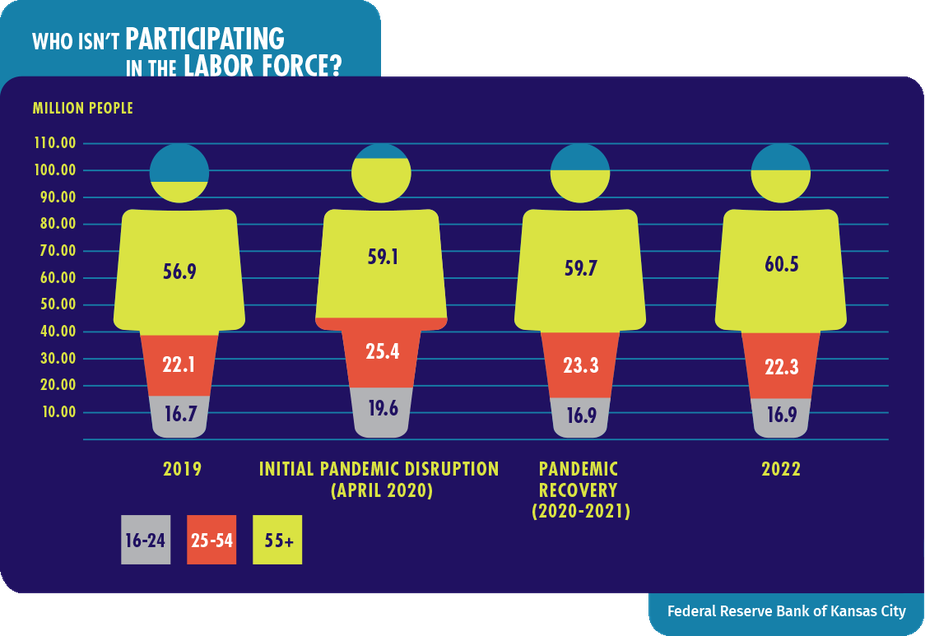
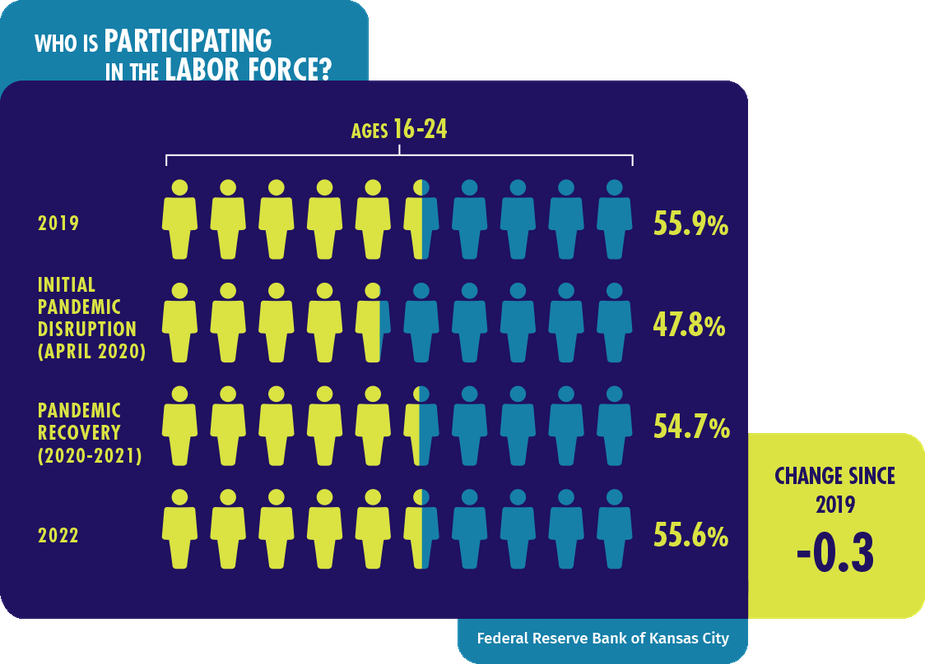
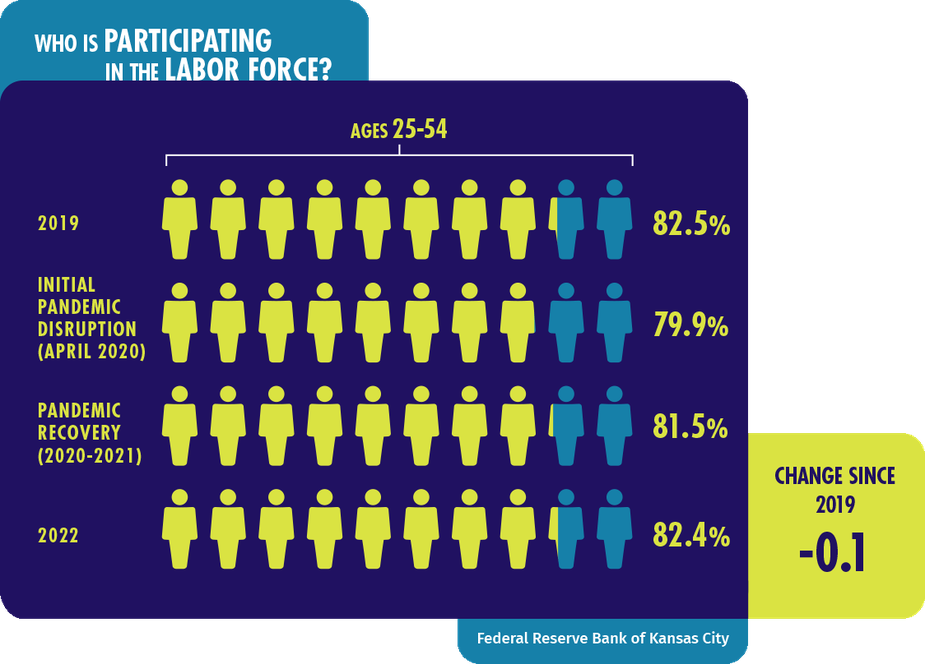
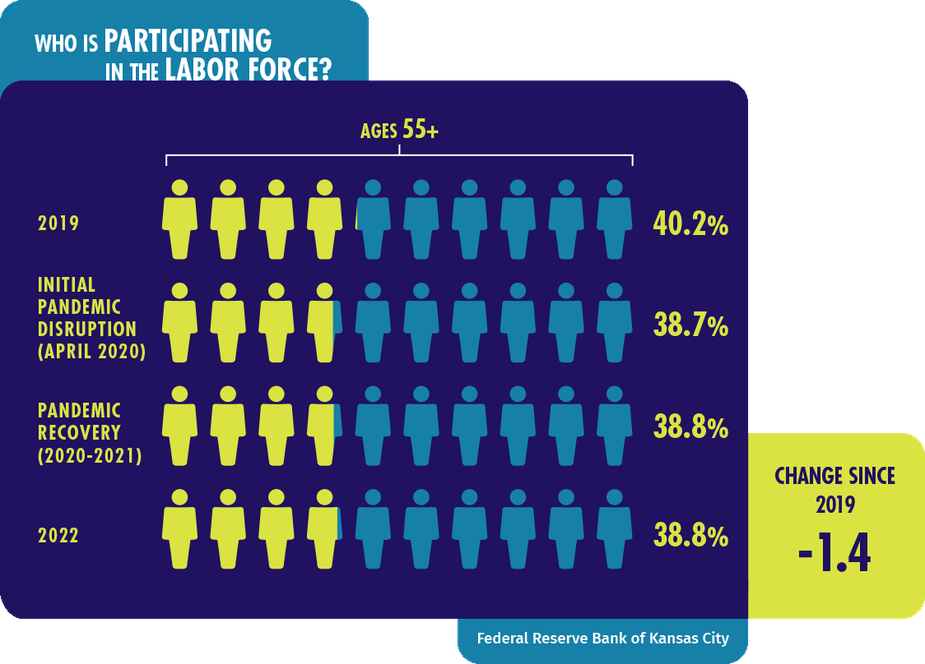
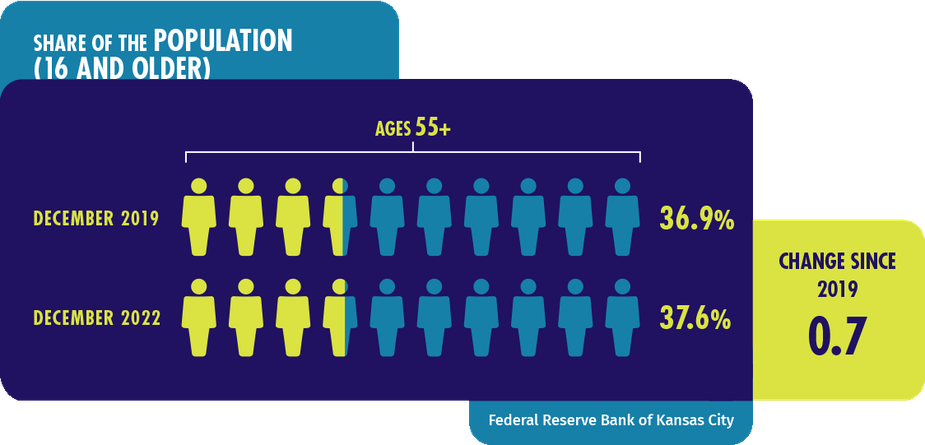
Slower immigration flow has reduced potential growth in the labor force.
The potential number of workers born outside of the U.S. was likely reduced by about 2 million people since 2016, limiting potential growth in the workforce. External LinkElior Cohen and External LinkSamantha Shampine of the Kansas City Fed estimated that a series of policies enacted in 2016 and pandemic related travel rules led to an estimated 3.4 million fewer immigrants between 2017-2022. According to Cohen and Shampine, between 50-75% of immigrants typically enter the labor force within a year of arrival and the shortfall in immigration has been particularly impactful for industries and regions most heavily reliant on foreign-born workers (Actual and Potential Internal Migration Between 2017-2022_)
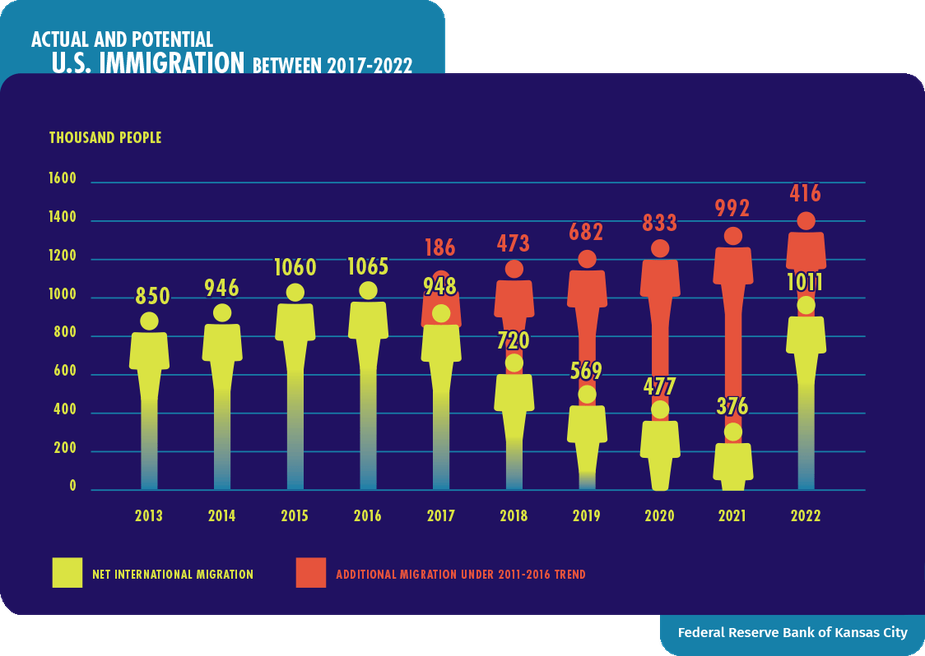
A variety of barriers have created hurdles to finding suitable work and encouraged self-employment.
Despite a record number of job openings, many workers have still faced persistent barriers to finding jobs that match their needs and expectations. Members of the Tenth District External LinkCommunity Development Advisory Council (CDAC) recently shared External Linkperceptions of trends in the labor force, barriers to work and nontraditional work arrangements. Low wages, hostile workplace culture and unaffordable childcare emerged as issues that push workers out of the full-time labor force, while a desire to control their own fate was cited as a factor that pulls them towards self-employment.
Other residents of the Kansas City Fed region have also offered their perspectives in conversations organized as part of the External LinkWorker Voice Project. Participants expressed that having the role of a care provider can shape the job search and create obstacles to finding the right employment. The cost and availability of childcare was consistently mentioned as a significant barrier for parents and accessibility of transportation, mismatched skill sets, and adequate pay were other common difficulties.
Conclusion:
Despite considerable improvement in U.S. labor market conditions since the early months of the pandemic, several key factors have contributed to a persistent imbalance between the number of open jobs and people looking for work. Increased retirements and pandemic health concerns have left a substantial gap in the workforce that could linger if demand for workers remains high. In addition, the growth of the labor force has also been limited by a slower flow of immigration and employment barriers that have held back potential workers. Mismatches in the labor market are important to the outlook of the economy and developments are likely to influence the path of inflation and monetary policy.
"The constraints [on the economy] revealed by the pandemic are likely to be with us for some time, perpetuating imbalances, contributing to inflation, and requiring a sustained policy response.”
Endnotes
-
1
Share of the U.S. Civilian Noninstitutional Population 16 and older. Source: U.S. Bureau of Labor Statistics
-
2
U.S. Labor Force Participation Rate. Source: U.S. Bureau of Labor Statistics
-
3
Share of the U.S. Civilian Noninstitutional Population not included in the Civilian Labor Force 16 and older. Source: U.S. Bureau of Labor Statistics
-
4
Cohen and Shampine. May 11, 2022. Federal Reserve Bank of Kansas City, Economic Bulletin. Sources: U.S. Census Bureau and author’s calculations.
